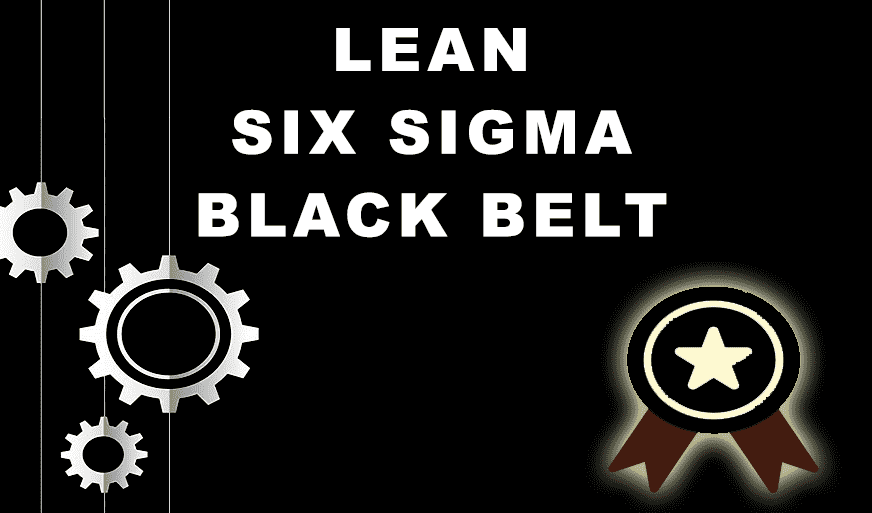10 Quality Management Strategies Adopted by Top Managers
-
 By Sprintzeal
By Sprintzeal - Published on Apr 11 2025

The highly competitive and energetic environment, compelling quality management is very critical to make sure that a business not only endures but also prosper. Top managers understand the value of developing and carrying out quality management strategies that assist in smoother operations, improve customer satisfaction, and achieve sustain success. In this blog, 10 key quality management strategies adopted by top managers will be outlined.
Table of Contents
Top 10 Quality Management Strategies
1. Quality Register
A quality register is an important tool that businesses use to document and monitor the various of their quality management process. The register assists in the recording the quality related activities and decisions, making sure that all elements of quality are monitored and properly handled. It acts as a documented history quality initiatives and ensures that the team is very well informed for the progress they made. Top quality management software can be used to register and help the top manager so that they can easily access quality data, improve decision making and ensure goals are achieved.
2. Continuous Improvement
A fundamental principle of quality management is the strategy of continuous evolution. Top managers makes certain that their organisation are always evolving by adopting new techniques like Kaizen( a japanese word meaning “change for better” ). Continuous improvement focuses the need to constant asses, analyse, and improve processes, products, and services. This creates an environment where innovation, and improve progress are placed in the office culture. Quality management techniques like PDCA ( Plan-Do-Check-Act) are often used to guide improvement drives and gurantee that the business is always improving its performance.
3. Customer Focus
Understanding what quality means to the customer is supreme in any organisation. The concept of customer orientation confirms that customer want, expectations, and feedback are epicenter to all decisions. Top managers priortise customer satisfaction by setting up systems that allow for constant feedback and dialogue. Whether its through surveys, focus groups, or direct interaction, top managers use this information to make data driven decisions that improves product quality and service offerings. This strategy aligns the entire business around the ultimate target delivering value to the customer.
4. Effective Leadership
Effective leadership vital a vital role in the success of quality management systems. Leaders set the tone of the organisation’s values and are responsible for nurturing an environment where quality is prioritised. They inspires teams, promote transparent communication, set clear quality objectives. Top managers establish quality management programs that include leadership development and involvement at all levels of organisation. Good leadership makes sure that everyone is on board with the company’s quality goals and drives the company towards excellence.
5. Process Approach
The process approach is a quality management strategy that focuses on managing and controlling processes to deliver quality outcomes. Top managers see each activity as a part of an interconnected process rather than separate events. By identifying critical processes within the organisation, they can optimise operations, reduce waste, and improve efficiency. A structured process approach helps managers measure performance, evaluate risks, and continuously refine operations. Saas advisors are particularly useful in this area, because they provide cloud based tools to automate processes, monitor performance, and make data driven decisions, finally improving overall efficiency and maintaining consistent quality standards.
6. People Engagement Strategy
A people engagement strategy is important for any successful quality management enterprise. The engagement of employees at all levels ensures quality is incorporated in the company culture. Top managers include employees in decision making processes, encourage participation in quality improvements projects, and provide rewards for contributions to quality enhancements. Nurturing an environment where people feel valued leads to better employee moral, higher productivity, and increased responsibility of the quality processes.
7. Evidence Based Decision Making System
Top managers understand the power of data in making informed decisions. The evidence based decision making system uses credible data accurate information to make strategic choices, particularly when addressing quality issues. Managers rely on data from customer feedback, performance metrics, and internal inspections to evaluate the effectiveness of the quality management system. This data guided approach enhances the effectiveness of quality mangement systems and help managers make changes based on real time insights.
8. Periodic Internal Audits
Periodic internal audits are an essential component of any quality management system. These audits help ensure that the business is maintaining to its quality standards and identifying grounds for improvement. Top manager schedule regular audits to asses processes, identify irregularities, and implement corrective actions. Through frequently reviewing performance, managers can detect potential problems before they intensify and maintain adherence with industry standards.
9. Implementation of Total Quality Management(TQM)
Total Quality Management(TQM) is a thorough way to improve a company’s performance by focusing on quality in all areas of business. It involves a company wide effort to achieve long term success through customer satisfaction. This strategy include continuous improvement, employee involvement, and a strong customer focus. Top managers implementing TQM engage everyone from senior leadership to frontline employees in quality efforts.
10. Regular Training and Skill Development
To maintain company’s high standards of quality, regular training and skill development are vital. Top managers make sure that employees consistently enhance their skills to meet the shifting demands of quality management. Training program focuses on particular quality management techniques such as operational control, risk management, and client support. Not only do you invest in the training and professional development of your team but you also build a culture of continuous learning that obviously leads to higher quality standards.
Conclusion
The best way to keep up the competitiveness is to implement these quality managements systems that can help companies provide excellent to their customers. By adopting practices such as constant improvement, client focus, evidence based decision making system, and TQM. Top managers can foster an environment that thrives on quality. Including these strategies into your quality management program will not only optimise your quality management services but also improve overall company’s efficiency.
FAQs
1. What is the purpose of a quality management strategy?
The goal is to optimize processes, products and services to achieve the highest levels of customer satisfaction and business success over the long term
2. What is the primary goal of quality management?
The focus should be on providing product or service which is of high quality and meets customer expectation consistently.
3. How does Total Quality Management (TQM) benefit businesses?
TQM focuses on process improvement, waste reduction, better product quality, and a culture of continuous improvement at the ground level.
4. What is the principle 10 of quality management?
The 10th Principle usually emphasises that improvement does not stop and is a goal to be achieved by any organization.
5. What is the core concept of strategic quality management?
TQM means quality aligned with long-term strategic goals of organization enabling evolving quality by implementing good to all customer.
6. What is a good quality strategy?
A strong strategy will be customer-centric and a path of continual improvement and integration of quality at every level of the organization.
Subscribe to our Newsletters
Popular Programs
Trending Posts
Benefits of QMS Certification for Your Business
Last updated on Jul 1 2024
How to Become a Quality Manager - Career, Job Scope and Certifications
Last updated on Dec 18 2023
Quality Manager Interview Questions and Answers for 2025
Last updated on Feb 10 2025
5 Lean Continuous Improvement Principles to Supercharge Your Operations
Last updated on Jan 2 2024
Understanding Lean Manufacturing's Pros and Cons
Last updated on Dec 30 2024
Six Sigma Yellow Belt Certification - Six Sigma for Beginners
Last updated on Aug 10 2022
Categories
- Agile Management 54
- AI and Machine Learning 42
- Big Data 53
- Business Management 51
- Cloud Computing 44
- Digital Marketing 56
- Information Security 8
- IT Hardware and Networking 17
- IT Security 103
- IT Service Management 29
- Leadership and Management 1
- Microsoft Program 2
- Other 43
- Programming Language 31
- Project Management 162
- Quality Management 75
- Risk Management 8
- Workplace Skill Building 2
Trending Now
Top Career benefits of Lean Six Sigma Green Belt
ArticleLean methodology, Six Sigma methodology and Lean Six Sigma Explained
ArticleSix Sigma Black Belt Certification – Value and Career Benefits in 2024
ArticlePareto Chart in Six Sigma - Explained
ArticleQuality Management Interview Questions 2024
ArticleSix Sigma Certification Guide - A Professional's Guide
ArticleSix Sigma Yellow Belt Certification - Six Sigma for Beginners
ArticleQuality Control Explained – Six Sigma
ArticleTotal Quality Management - A Complete Guide for Beginners
ArticleQuality Assurance in Six Sigma Explained
ArticleQuality Assurance vs Quality Control
ArticleSix Sigma Certification – Everything you Need to Know About Getting Certified
ArticleLean Six Sigma on Resume for Rewarding Career Benefits
ArticleQuality Manager Interview Questions and Answers for 2025
ebookService Delivery Manager Interview Questions and Answers (With Examples)
ArticleSix Sigma Interview Questions and Answers 2024
ArticleHow to become a Quality Analyst
ArticleA Supply Chain Management Guide to Mastering Logistics End to End
ArticleSenior Quality Manager Interview Questions and Answers 2024
ArticleTop 30 Quality Analyst Interview Questions and Answers 2025
ArticleFinancial Analyst Interview Questions and Answers 2024
ArticleRisk Manager Interview Questions and Answers 2024
ArticleCompliance Manager Interview Questions and Answers 2024
ArticleOperation Manager Interview Questions and Answers
Article5 Lean Continuous Improvement Principles to Supercharge Your Operations
ArticleHow to Become a Quality Manager - Career, Job Scope and Certifications
ArticleEssential Components of a Quality Management System
ArticleSix Sigma Certifications - Reasons Why you Should Get Them
ArticleTop Qualities of a Good Manager and a Leader
ArticleLearn about Statistical Process Control (SPC) and its top applications
ArticleCost of Poor Quality - A Detailed Guide
ArticleImplementing 5S Methodology for Better Work Efficiency
ArticleWhat Is Lean Management?
ArticleBest Six Sigma Books in 2024
ArticleLeadership vs Management - The Ultimate Guide
ArticleQuality Assurance Plan - Six Steps To Quality Assurance Plan
ArticleOperational Planning Creation, Key Elements and its Benefits
ArticleA Complete Guide to Product Life Cycle Stages 2025
ArticleSix Sigma tools for DMAIC Phases
ArticleWhat Is Lean Manufacturing?- An Overview
ArticleThe Lean Continuous Improvement Model: A Comprehensive Guide
ArticleDMAIC vs. DMADV: Key Differences and Choosing the Right Six Sigma Methodology
ArticleA Deep Dive into the Power of Lean Continuous Improvement Process
ArticleLean Continuous Improvement Methods for Business Excellence
ArticleIntroduction to Lean Manufacturing- Definitions, Framework, and More
ArticleUnderstanding the Key Principles of Lean Manufacturing
ArticleSecret to Unlock Organizational Excellence: Stages of Continuous Improvement
ArticleLean Continuous Improvement: A Detailed Guide to Mastering Organizational Quality
ArticleLean Waste Management: The Ultimate Guide 2023
ArticleA Deep Dive into Lean Continuous Improvement Tools
Article8 Wastes of Lean - Strategies for Identification and Elimination
ArticleThe Ultimate Guide to Lean Manufacturing
ArticleUnderstanding Lean Manufacturing's Pros and Cons
ArticleLean Waste Reduction Strategies: Boost Efficiency and Cut Costs
ArticleTop 10 Lean Manufacturing Tools for Optimal Productivity
ArticleBeyond the Basics: Benefits of Lean Continuous Improvement
ArticleWhat are Quality Standards? | A Guide to ISO Standards
Article7 Important Types of Quality Management System
ArticleA Comprehensive Guide to Quality Management Systems
ArticleISO 9001 Standard: Benefits and Certification
ArticleBenefits of QMS Certification for Your Business
ArticleStep-by-Step Implementation Guide to ISO 9001
ArticleThe Ultimate Guide to ISO 9001: Boosting Quality and Certification Success
ArticleQuality Management System – QSM Approaches and Methodologies
ArticleHow to Effectively Implement a Robust Quality Management System?
ArticleExplaining QMS Documentation Structure: Benefits and Best Practices
ArticleWho Needs ISO 9001 Certification and Why?
ArticleKey Elements of ISO 9001:2015 Quality Management System
ArticleOvercoming Common Challenges in ISO 9001 Certification: Tips and Best Practices
ArticleBest Quality Management Tools
ArticleTotal Quality Management (TQM) vs. Six Sigma
ArticleQuality Manager Salary: What Freshers & Experts Earn in 2025
ArticleCertified Scrum Product Owner: Job Roles And Responsibilities
ArticleTips for Continuous Integration Testing: Streamlining QA
Article
















